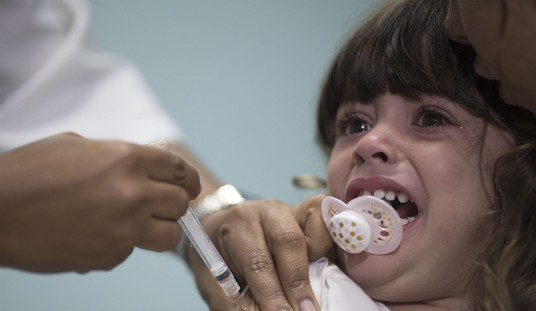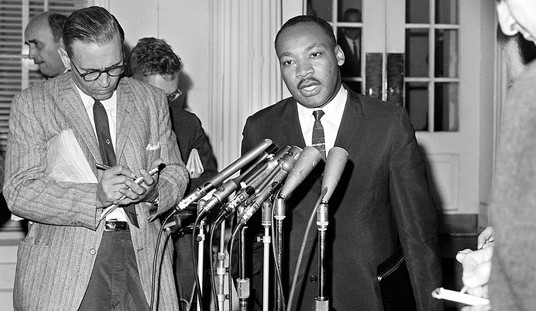How does #49 become #1? Simple – by cutting through the tiers, levels, conditions, and all other roadblocks to COVID-19 vaccinations. Alaska became the first state in the US to allow all residents 16 years and older to access the vaccines, regardless of their health or living conditions.
Governor Mike Dunleavy announced the change late last night:
Alaska became the first state in the nation Tuesday to lift all eligibility requirements for adults to get a coronavirus vaccine.
Gov. Mike Dunleavy (R) announced Tuesday that all individuals who live or work in Alaska and are age 16 and older can get a shot. The vaccine from Pfizer is available to individuals who are 16 years old and up, while the vaccines from Johnson & Johnson and Moderna are available to those who are at least 18 years old.
“This historic step is yet another nationwide first for Alaska, but it should come as no surprise. Since day one, your response to the pandemic has been hands-down the best in the nation,” Dunleavy said in a statement to Alaskans. “I couldn’t be prouder of Alaska’s response. From being the first state to offer widespread testing, to maintaining one of the lowest mortality rates in the country, to rolling out vaccinations to every willing Alaskan, we got here by working together.”
How did Alaska put itself in position to make this move, especially given the state’s legendary geographical challenges? It led the nation in vaccinations per capita, CNN reported yesterday, getting to a whopping 40 doses per 100 people as of the beginning of the week. Having a well-established infrastructure for rural healthcare helped, but the state also responded with alacrity to prepare for the needs of this particular pandemic response. However, that system also relies on established private or quasi-private distribution channels:
A localized approach to vaccination hasn’t worked everywhere, but it’s worked in Alaska, Zink said. The state distributes vaccines to different regions but doesn’t give directives, she said — it’s up to the communities to decide how to administer vaccines based on their needs.
“If you provide communities with the tools they need to protect themselves, they oftentimes are really able to do it,” she said.
Because so much power has been turned over to different regions of Alaska and the health care providers trusted in those areas, health care workers have been able to “meet people where they’re at,” Zink said: That means they’ll deliver vaccines by boat, dog sled, helicopters and small planes, or go door-to-door in small communities to vaccinate as many community members as possible.
“It’s really different across the state,” she said. “It’s highly reliant on local communities who know their system … way better than we (the state health department) do.”
Another reason: Alaska’s previous restrictions were much looser than in other states. Until the change yesterday, the eligibility started at age 55 or people with certain underlying conditions. That allowed for more rapid distribution, which means more people resistant to the virus, which in turn means less retransmission in these communities. By contrast, other states had higher age eligibility thresholds and sometimes combined those with requirements for underlying conditions.
Thanks to its success, Alaska can take the gloves off in the vaccine fight. And with the latest news about the procurement of doses, one has to wonder why other states keep sticking to the slow-roll strategy:
Biden is expected to announce later Wednesday a plan to acquire an additional 100 million doses of the Johnson & Johnson one-dose vaccine by year-end, according to a New York Times report, citing unnamed administration officials.
The goal of the move is to have enough on hand to vaccinate children and, if necessary, administer booster doses or reformulate the vaccine to combat emerging variants, the report added. The announcement is expected to be made at an event with the CEOs of J&J JNJ, 0.88% and Merck & Co. MRK, 1.08%, which has agreed to help manufacture the J&J vaccine in an unusual deal that was brokered by the Biden administration.
The Johnson & Johnson doses alone committed to the US would be enough to vaccinate nearly the entire population. That kind of surplus should have every state looking at mass vaccinations as soon as possible rather than targeting strategies. The quicker we get vaccines into as many arms as possible, the less opportunities there are for virus mutations. Let’s hope Alaska leads the way for some strategic adaptation.








Join the conversation as a VIP Member